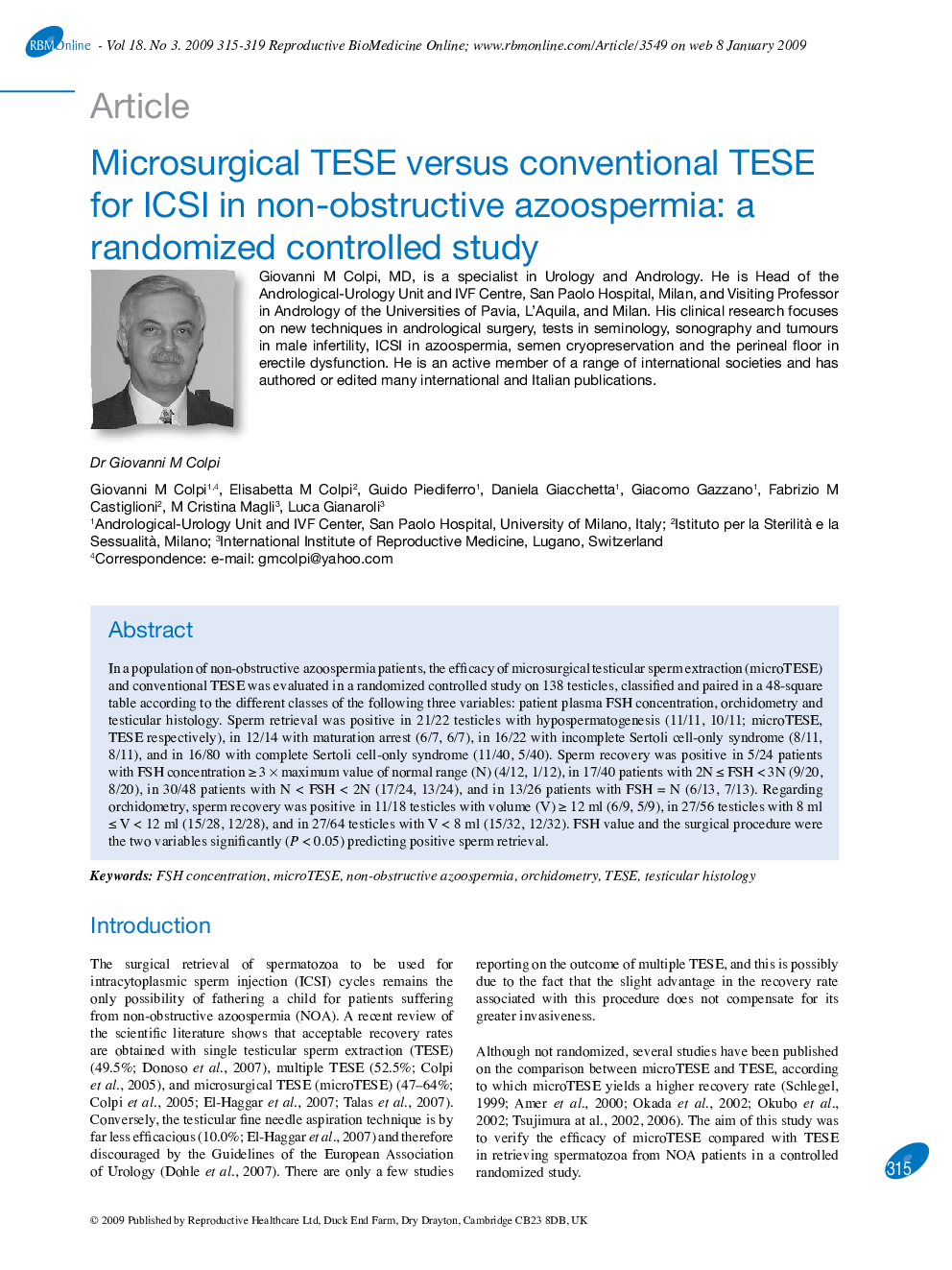| Article ID | Journal | Published Year | Pages | File Type |
|---|---|---|---|---|
| 3972014 | Reproductive BioMedicine Online | 2009 | 5 Pages |
In a population of non-obstructive azoospermia patients, the efficacy of microsurgical testicular sperm extraction (microTESE) and conventional TESE was evaluated in a randomized controlled study on 138 testicles, classified and paired in a 48-square table according to the different classes of the following three variables: patient plasma FSH concentration, orchidometry and testicular histology. Sperm retrieval was positive in 21/22 testicles with hypospermatogenesis (11/11, 10/11; microTESE, TESE respectively), in 12/14 with maturation arrest (6/7, 6/7), in 16/22 with incomplete Sertoli cell-only syndrome (8/11, 8/11), and in 16/80 with complete Sertoli cell-only syndrome (11/40, 5/40). Sperm recovery was positive in 5/24 patients with FSH concentration ≥ 3 × maximum value of normal range (N) (4/12, 1/12), in 17/40 patients with 2N ≤ FSH < 3N (9/20, 8/20), in 30/48 patients with N < FSH < 2N (17/24, 13/24), and in 13/26 patients with FSH = N (6/13, 7/13). Regarding orchidometry, sperm recovery was positive in 11/18 testicles with volume (V) ≥ 12 ml (6/9, 5/9), in 27/56 testicles with 8 ml ≤ V < 12 ml (15/28, 12/28), and in 27/64 testicles with V < 8 ml (15/32, 12/32). FSH value and the surgical procedure were the two variables significantly (P < 0.05) predicting positive sperm retrieval.
